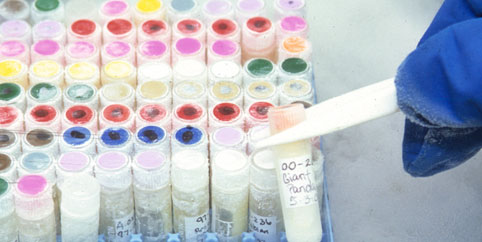San Diego’s Frozen Zoo

Playing home to over 3,500 animals over a 100 acre campus, the San Diego Zoo is one of the world’s largest. It has a few features which are rare among zoos, too. Except for the reptile house, all of its major exhibits are open-air — the animals are not in traditional cages. It is one of only a few zoos to have giant pandas. It features an arboretum which has a number of rare plants in it, and it used to grow three dozen types of bamboo (for the pandas) and 18 different types of eucalyptus trees (for the zoo’s koalas).
And then there’s the Frozen Zoo.
Founded in 1976, the Frozen Zoo is a bank of biological material from animals and plants alike — often, of endangered or threatened species — frozen in liquid nitrogen to a temperature approaching negative 200 degrees Celsius. The laboratory has samples from over 8,000 different subjects and spans roughly 800 species or subspecies. It is not the only such facility in the world — there are about a half dozen or so others — the San Diego one likely has the largest inventory of DNA. And it’s partnered with many other institutions in hopes that the Zoo can help stave off extinction of at-risk animals.
Of particular note is the banteng, an endangered species of wild cattle indigenous to Southeast Asia. In 2003, the Frozen Zoo sent a DNA sample of a banteng to a lab in Worcester, Massachusetts named Advanced Cell Technology, who in turn, were able to clone two bantengs. As explained to Reuters, the DNA was transferred into eggs of regular, domestic cows, and implanted. Sixteen eggs yielded two full term births. As of 2006, one was still alive.
But the Frozen Zoo was not set up specifically for the purpose of cloning. Rather, it simply seemed like a good idea to collect the biological history of our world as it was happening. (And besides, in 1976, cloning was more science fiction than science.) Given the creativity and innovations of the science community, the Frozen Zoo is likely to pay dividends in the future. But bringing back long-extinct animals like sabertooth tigers and even dinosaurs? The Frozen Zoo’s director, Olivia Rider, told CBS that it was unrealistic — “interesting but impossible.”
Bonus fact: One can visit the San Diego Zoo (but not the Frozen Zoo) virtually — Google has the zoo mapped using its “Street View” feature, turning thousands of photos into a continuous panorama.
From the Archives: Immaculate Conceptions: Animals which clone themselves. Also, Hairy Houdini: The story of a now-deceased animal who lived at the San Diego Zoo.
Related: Your own frozen zoo. Kind of.
Image via the San Diego Zoo

Leave a comment